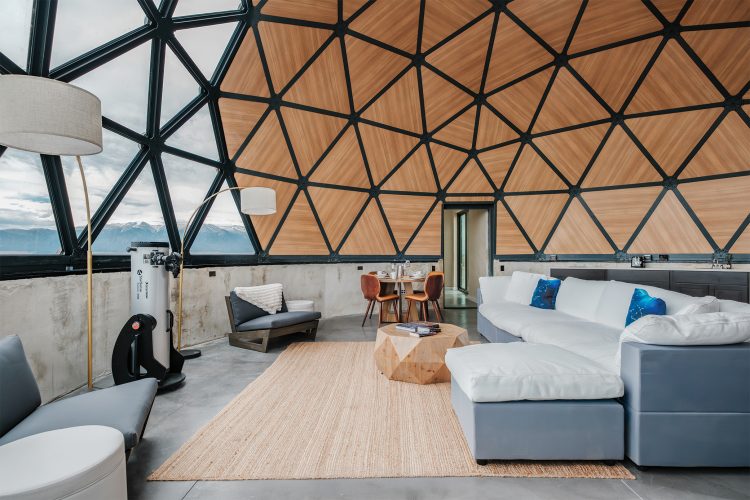
In 2020, while much of the world was baking sourdough and learning yoga from YouTube, Gamal Jadue Zalaquett was pitching a tent in Colorado’s San Luis Valley—alone, off-grid, and entirely committed to a vision. For 45 days, he lived without running water or electricity, documenting the experience as both a personal reset and an intentional marketing campaign. The result? Kosmos Stargazing Resort & Spa, now one of the most ambitious eco-luxury resorts in the state—and the most successful crowdfunded hotel project in history. “I knew I had to be there to build it,” Gamal says. “I had to make a big move, a catalyst. That time off-grid wasn’t just for show. It shaped everything.”
Just 15 minutes from Great Sand Dunes National Park, Kosmos sits at 8,000 feet above sea level in one of the darkest sky regions in the U.S.—an ideal setting for stargazing, healing, and solitude. It’s not just the skies that make Kosmos special—it’s the way guests are invited to engage with them. Each villa (as of time of interview, there are three operational, with plans to expand to 36 accommodations— eventually there will be 15 stargazing villas, four galaxy villas, 14 hotel rooms, and three modular units) comes stocked with two high-end telescopes, Celestron binoculars for meteor showers, and a guided astronomy session to help guests navigate the cosmos.

More than a stargazing spot, Kosmos is also a lesson in sustainability. Built with hempcrete (a breathable, mold-resistant, fire-safe material made from hemp and lime), the resort is designed as a case study in healthy hospitality. “People think sustainability is just solar panels. But what you breathe matters, too,” Gamal says. “Hempcrete regulates humidity. It’s quiet. It just feels better to be inside of it.”
If hempcrete forms the bones of Kosmos, healing is the heartbeat. Gamal is in the process of installing a geodesic dome greenhouse that will serve as a yoga and breathwork studio. A future spa will feature hyperbaric oxygen therapy, developed in partnership with a Boulder-based clinic, along with hot-cold contrast treatments like outdoor ice baths and saunas. “I wanted to heal myself by building this,” he says, “and now I get to help other people do the same.”
That ethos of retreat and reset permeates every aspect of the experience. While the first three villas are already open, by the end of 2026, the full collection of 36 accommodations will be complete, Gamal assures. Kosmos will then offer a range of price points—from high-end galaxy villas to more modest hotel-style rooms—making it accessible to both luxury travelers and stargazers who want an adventure a step more luxurious than Gamal’s initial experience in a tent.

In the background, Gamal is also building the Kosmos Foundation, a nonprofit arm focused on astronomy education and dark sky preservation. He’s had early conversations with NASA and the National Science Foundation about future partnerships and is laying the groundwork for a stargazing park and telescope training center that could serve both academic researchers and everyday visitors. “Astrotourism is growing,” he says, “but most places just give you a cabin with a nice sky. We want to teach you how to actually explore it.”
That sense of discovery—of seeing something for the first time—is what keeps Gamal going. “I had a guest tell me his wife and daughter had never seen the Milky Way before,” he says. “She was in her forties. I couldn’t believe that. But then I realized— that’s exactly why we’re here.”
Kosmos may have started as a one-man tent in the middle of the desert. But today, it’s a living, breathing resort—built from the earth, aligned with the stars, and rooted in something deeper: the universal need to look up, slow down, and feel awe again.
For print-exclusive stories, download the digital magazine or pick up a copy from select local King Soopers, Safeway, Tattered Cover, or Barnes & Noble locations.
















